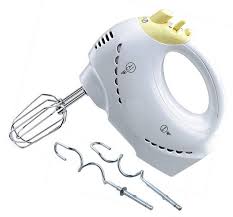Machinery
Machinery divided into simple and complex mechanical machinery.








Gear
gear is neat edge toothed wheel. We turn a gear to drive another gear, the gear change the direction of movement of the object, but also to speed up or slow down the speed of the object. When the large gear to rotate in a counterclockwise direction, it will drive pinion in a clockwise direction. When the revolution of the large gear, a pinion gear is driven to rotate twice, because this is smaller than the pinion gear.
The two separate gears, connected by a chain. When the large gear to rotate in a clockwise direction, will lead to the same pinion is rotated in a clockwise direction. Watches, alarm clock and bicycles application of the principles of the gear.

Fried complex mechanical
complex machinery refers to two or more simple machines.
Nail clippers and application of the principle of the lever of the wedge.

Whisk the application of the principles of axles and gears.

Pencil sharpener applied axle, wedge and screw the principle.

Cutter application and leverage the wedge principle.

Machinery divided into simple and complex mechanical machinery.
Kind of simple machines include lever, inclined plane, wedge, screw, axles, pulleys and gears.
Simple Machines
lever
When we use the iron spoon biscuit barrel lid open, we applied the principle of leverage. Leverage is a rotation around a hard baton's fixed point . There are three important lever position, that is the focus, the fulcrum and the power point. Scissors, shelves and broom are references to the principle of leverage.
Lever also divided into three categories:
The first class lever, the fulcrum is positioned between the focus and priorities. For example: scissors, hammers, spoons (to open the lid) and pliers.
The second class lever, located at the midpoint between the fulcrum and the power point. For example: cutter, trolleys, nutcracker and bottle opener.
Between the third class lever, the force point and the focus and fulcrum. For example: clip the ice, fishing rod, mops and staplers.
Slope
The inclined surface. To lift a heavy object would cost a lot of power, but if you push the same weight along an inclined plane, the force required on a small lot. The longer the slopes on the slope of the smaller weights to put more time and effort to run uphill. Stairs, ladders and road (ramp) on the slopes of the principles are applied ramp.
Wedge
Wedge by at least one inclined surface thereof. Wedge has two ends, one end of a thick, thin the other end. It uses force to split, drilling or cutting objects. Harmonious face, like a wedge longer, thinner, more effort. Knives, axes and saws are applications of the principles of the wedge.
spiral
An inclined plane wrapped around the cylinder of simple machines is called spiral. Screw spiral principle of operation, can the two objects fitted together. Thread more dense, more effort. Screw, crane screw cap and screw taps are applied principle.
axle
Right wheel axle and axle components. Where there is a mechanical application of the principle of the wheel axle to operate. Some machines Although there is no wheel, only the axis, but it is the application of the principles of the axle to exercise, because it replaced the crank wheel. When the axle for moving, rotating wheel will follow. Tires, door handles and pulley are applications of the principles of the hub.
pulley
There are types of pulley fixed pulley, pulley and pulley block.
Fixed pulley is fixed in one position without moving the rotating pulley. Fixed pulley to change the direction of the force, but not effort.
Movable pulley can be moved together with the pulley weights. Movable pulley can not change the direction of the force, but it can and effort.
Pulley block is fixed pulley and the pulley together. Pulley block not only change the direction of movement of the object, but also effort.
Gear
gear is neat edge toothed wheel. We turn a gear to drive another gear, the gear change the direction of movement of the object, but also to speed up or slow down the speed of the object. When the large gear to rotate in a counterclockwise direction, it will drive pinion in a clockwise direction. When the revolution of the large gear, a pinion gear is driven to rotate twice, because this is smaller than the pinion gear.
The two separate gears, connected by a chain. When the large gear to rotate in a clockwise direction, will lead to the same pinion is rotated in a clockwise direction. Watches, alarm clock and bicycles application of the principles of the gear.
Fried complex mechanical
complex machinery refers to two or more simple machines.
Nail clippers and application of the principle of the lever of the wedge.
Whisk the application of the principles of axles and gears.
Pencil sharpener applied axle, wedge and screw the principle.
Cutter application and leverage the wedge principle.